Dec 9, 2025 Bike Ride
We finally took a full on bike ride! There was a breeze, but not strong, so we rode south on the dike that protects the ‘fruit bowl’ of New Zealand from the ocean. The ride follows the waterfront past Haumoana Beach through the tiny hamlets of Haumoana and Te Awanga and terminates at Clifton Station, a large sheep & cattle station occupying the hills and onto the cliffs of Cape Kidnappers.
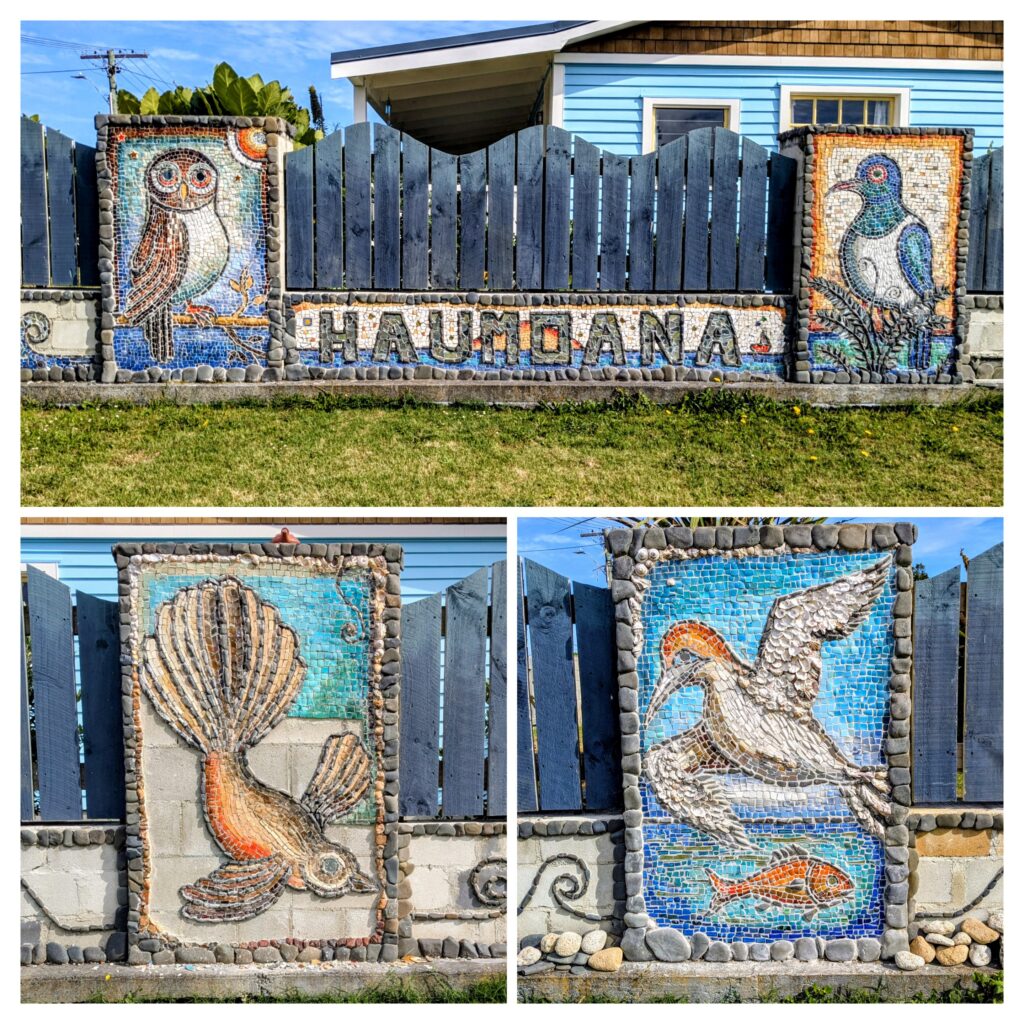
Passing through Haumoana we spotted this fence with colorful mosaics of native birds.
At the end of the trail we stopped at Hygge, an open air café looking out toward the ocean, for delicious coffee and muffins. Pronounced ‘hyoo-gah’, “Hygge is a Danish and Norwegian term that describes a cozy, contented mood created by comfort and conviviality, often associated with enjoying time with loved ones in a warm atmosphere. It embodies simplicity, togetherness, and the appreciation of life’s small pleasures”. (Wiki)
Across the road from Hygge there is a collection of older buildings labeled “Clifton Station”, a sheep and cattle ranch run by the Gordon family since 1861!
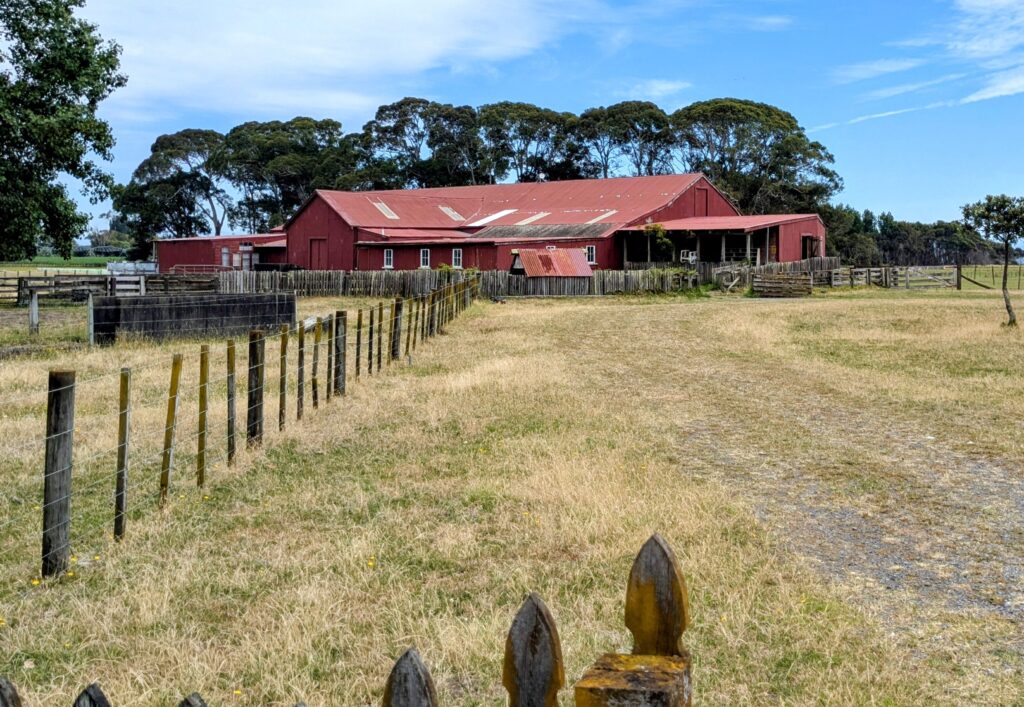
The Clifton Station woolshed was the site of tours featuring sheep-shearing, sheep-mustering and other farm work until Covid put a stop to it. Since then the Station has added a glamping experience to its roster of farming enterprises.
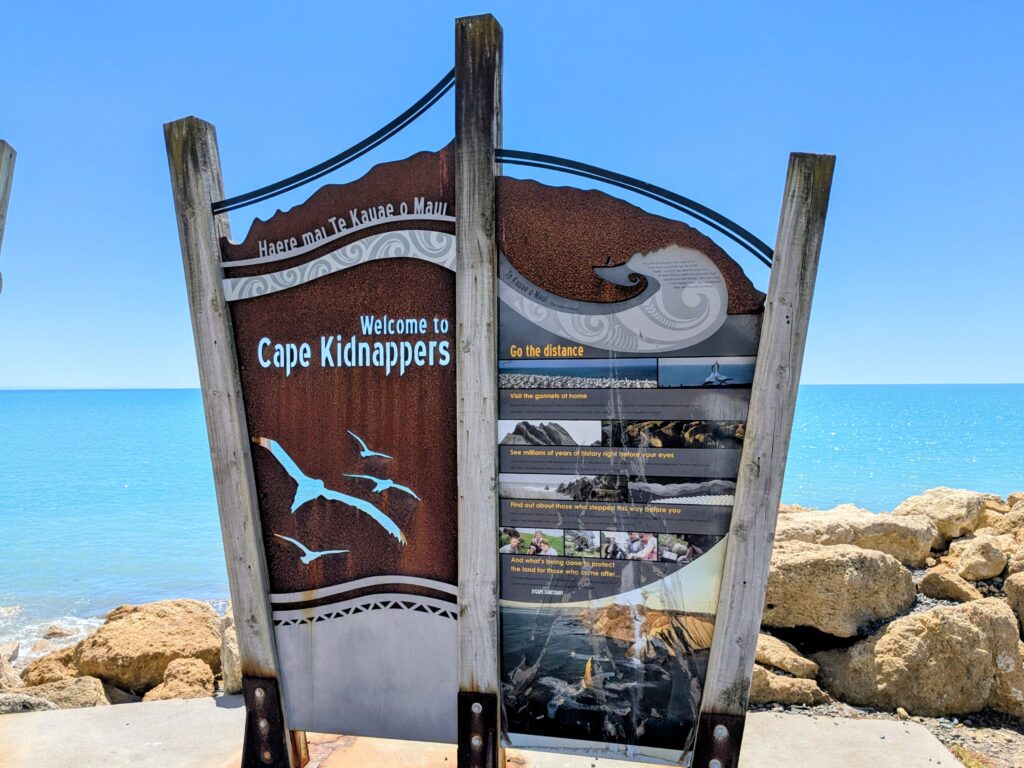
The end of the road is the beginning of the walking trail around Cape Kidnappers. We’ll save that for another day
Dec 8, 2025 Dawn, Beaches
We rode the bikes the few blocks to the waterfront early this morning to see the sunrise.
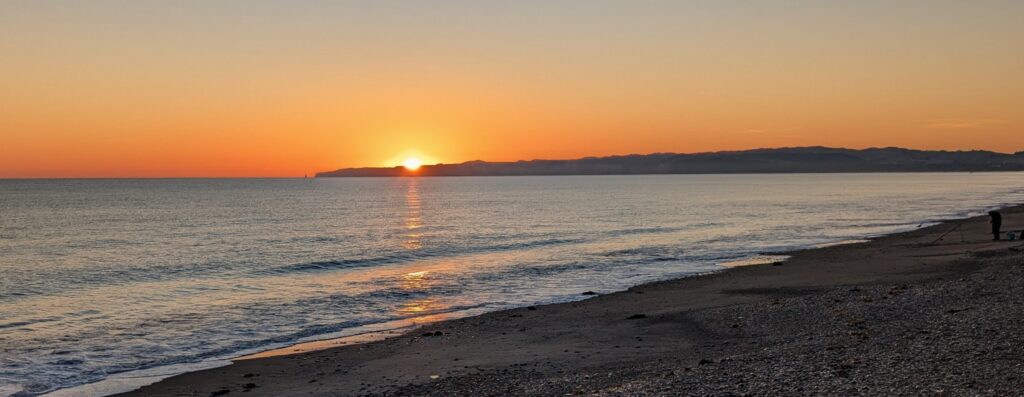
We saw a few seagulls and a fisherman along with the sunrise over Cape Kidnappers to the south.
We rode back to the B&B for breakfast then prepared for a road trip to the beaches to the south.
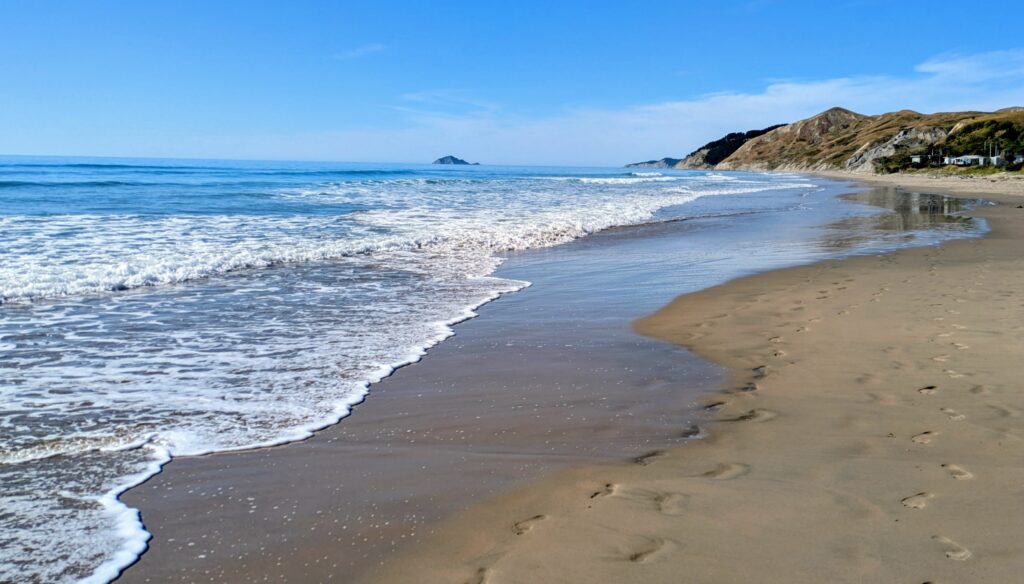
Ocean Beach, about a half hour drive south, is a good swimming beach we’ve been told, but we just enjoyed a walk in the surf.
Another 20 minute drive took us to Waimarama Beach further south.
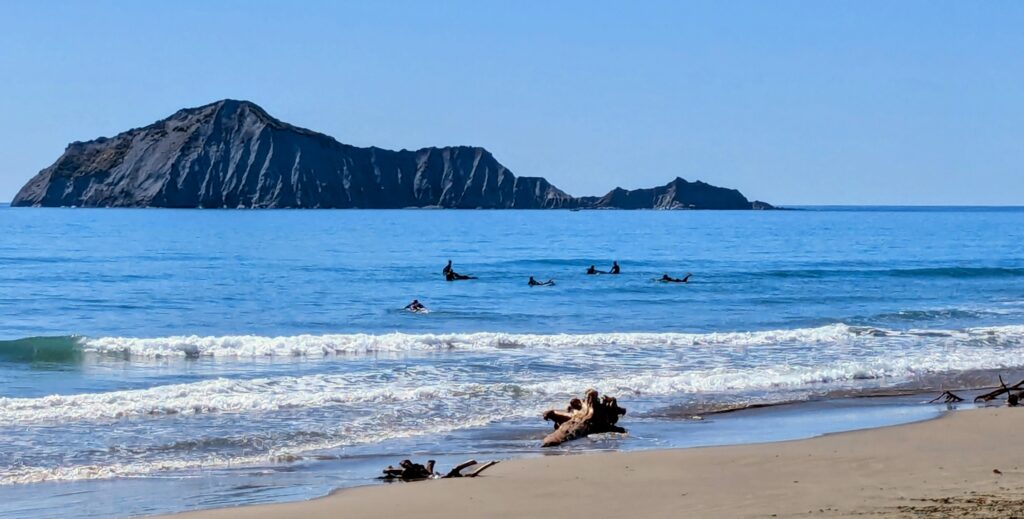
Closer to the island Te Motu-o-Kura or Bare Island, we watched a surf class from Napier Boy’s High School (according to the van in the parking area).
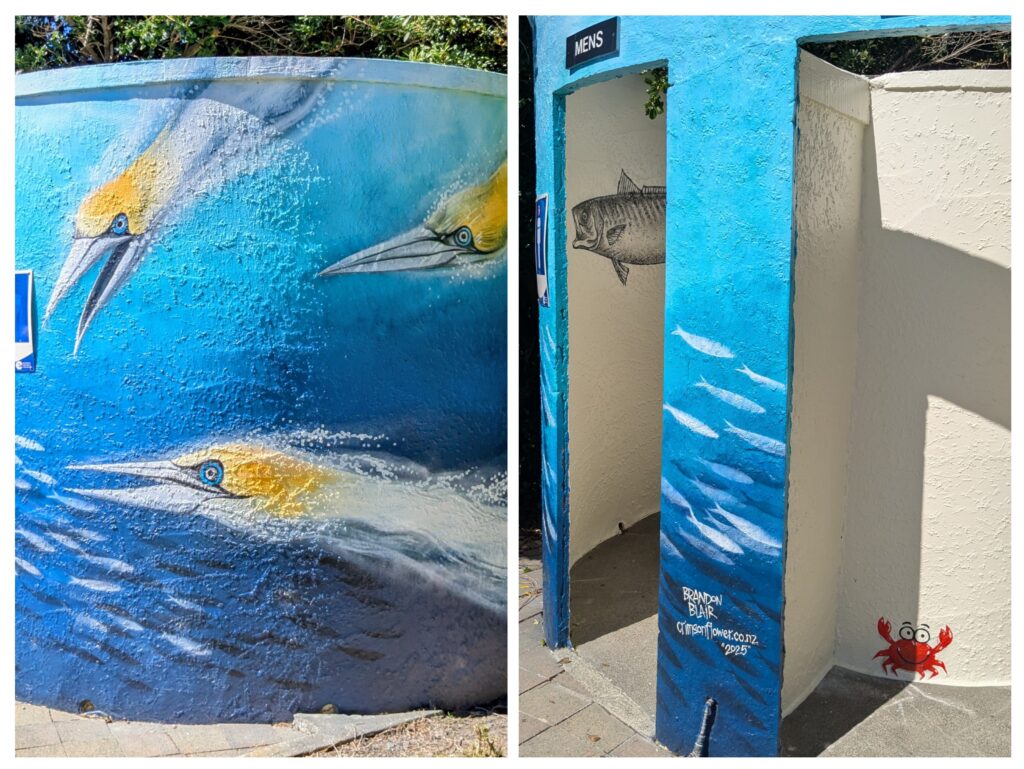
And always, the whimsical, colorful toilets we see all over New Zealand!
Dec 7, 2025 Art Deco
A quick walk around Napier, the Art Deco Capital of the World! We had a little time the last few days to see a bit of the Art Deco architecture in Napier’s Central Business District.
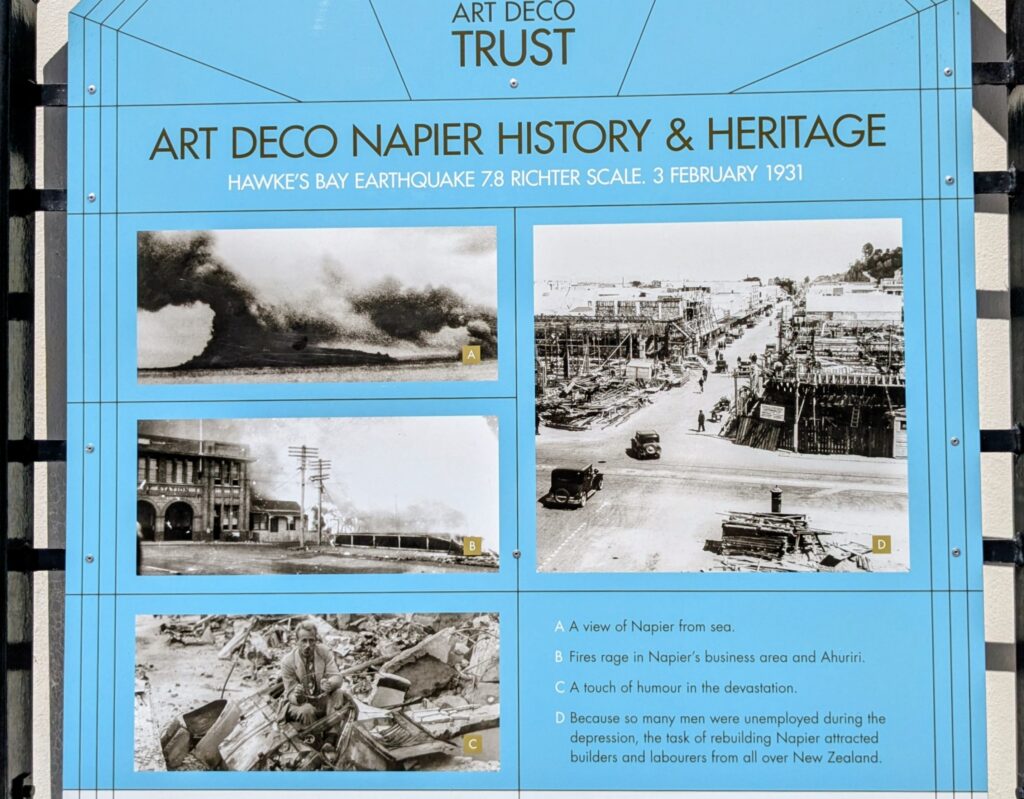
A reader board explains the reason there is a preponderance of Art Deco style in Napier. The 1931 earthquake destroyed the CBD and it was rebuilt in the style of the era!

The first building we explored was the Tobacco Company building, which was open but not set up yet for the Gin tasting tour. We didn’t stay to imbibe.
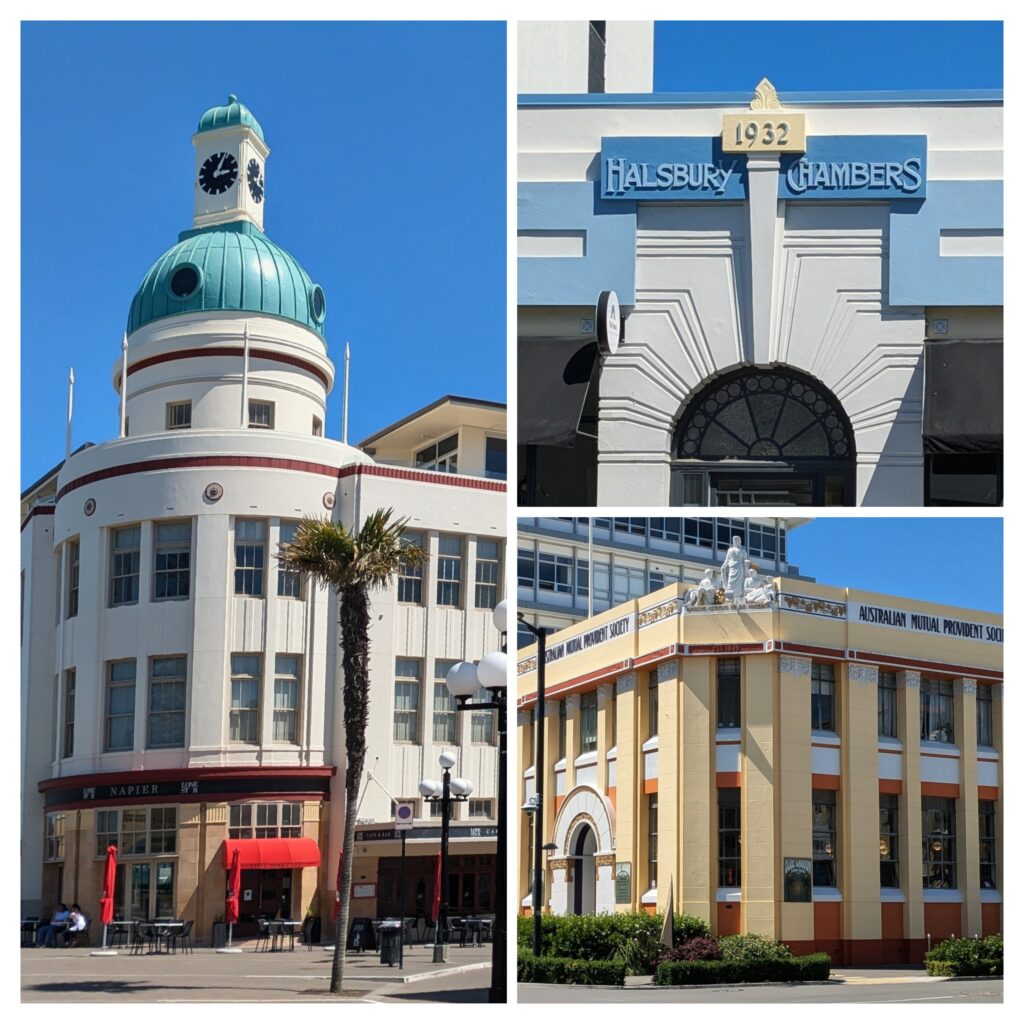
A few other building facades around town.
Dec 5, 2025 Beach Comparison
We traveled north to picnic along the waterfront. About an hour later and a pleasant drive over coastal hills we reached Waipātiki Beach with it’s calmer water and tan sandy beach.
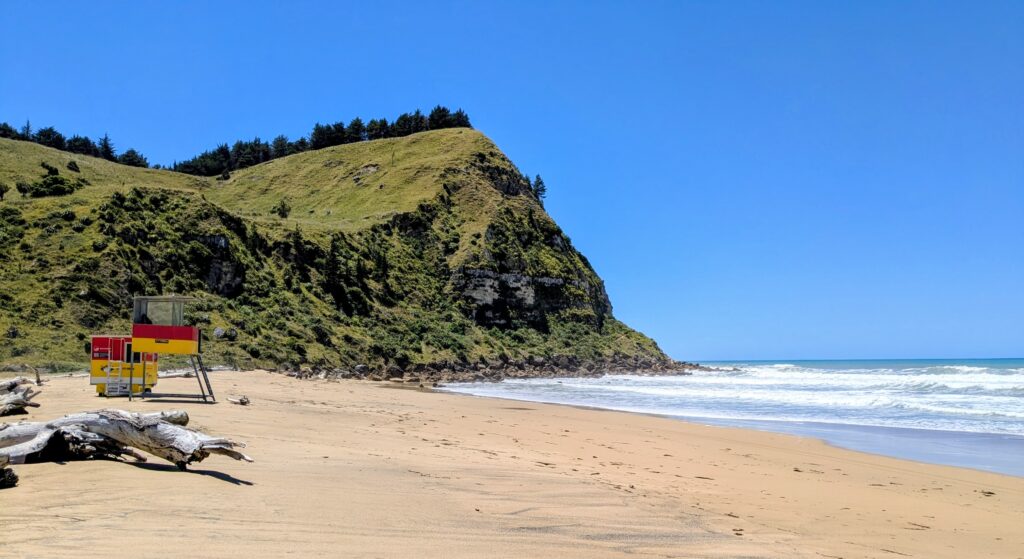
Even a lifeguard tower, unmanned today, so we didn’t swim!

The Pohutukawa trees are small enough here to see the feathery, fireworks burst of flowers up close. At the base of the long red petals is a drop of nectar that the local birds were busy licking up!
About half way back to Napier we stopped along the Pacific Coast Highway 2 at a picnic table to enjoy our sandwiches and compare this black cobble, pebble ‘beach’ with Waipātiki beach further north.
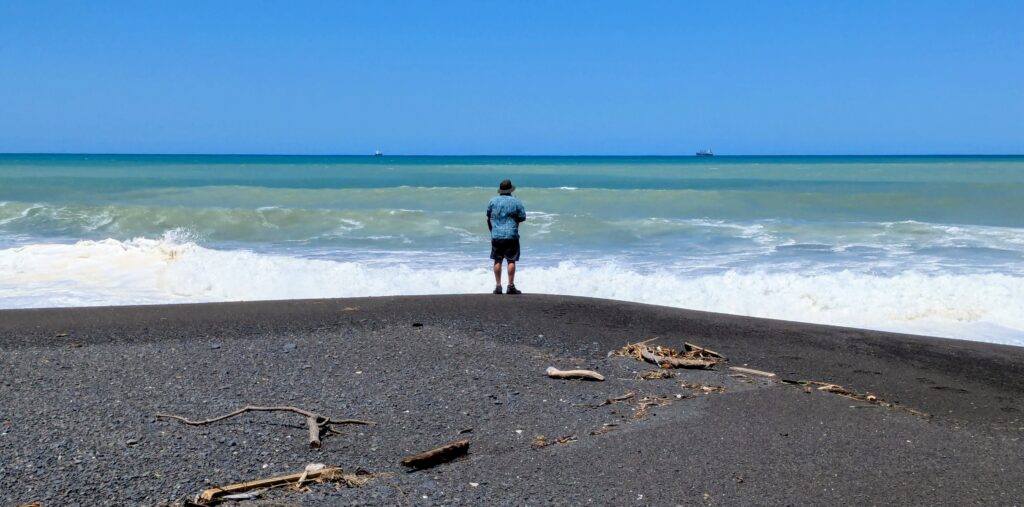
The waves here were much more powerful, you could see rocks and sticks rolling in the surf, as well as the steep drop-off right in front of Robert!
Dec 4, 2025 Between Napier and Hastings
We’ve been staying in Clive, about a 15 minute drive south of Napier, and 15 minutes north of Hastings, since Nov. 30. We will be here until Dec. 22, at a wonderful Airbnb cottage just a few blocks from the ocean. I can’t say ‘beach’ because the oceanfront along Hawke’s Bay here is not ‘beachy’, the shoreline is pebbles and cobbles and the surf is dangerous with steep drop-offs, strong undertows and unpredictable powerful waves! The hosts here provide us use of bicycles to ride the trails along the waterfront, and we took advantage for exploratory rides.
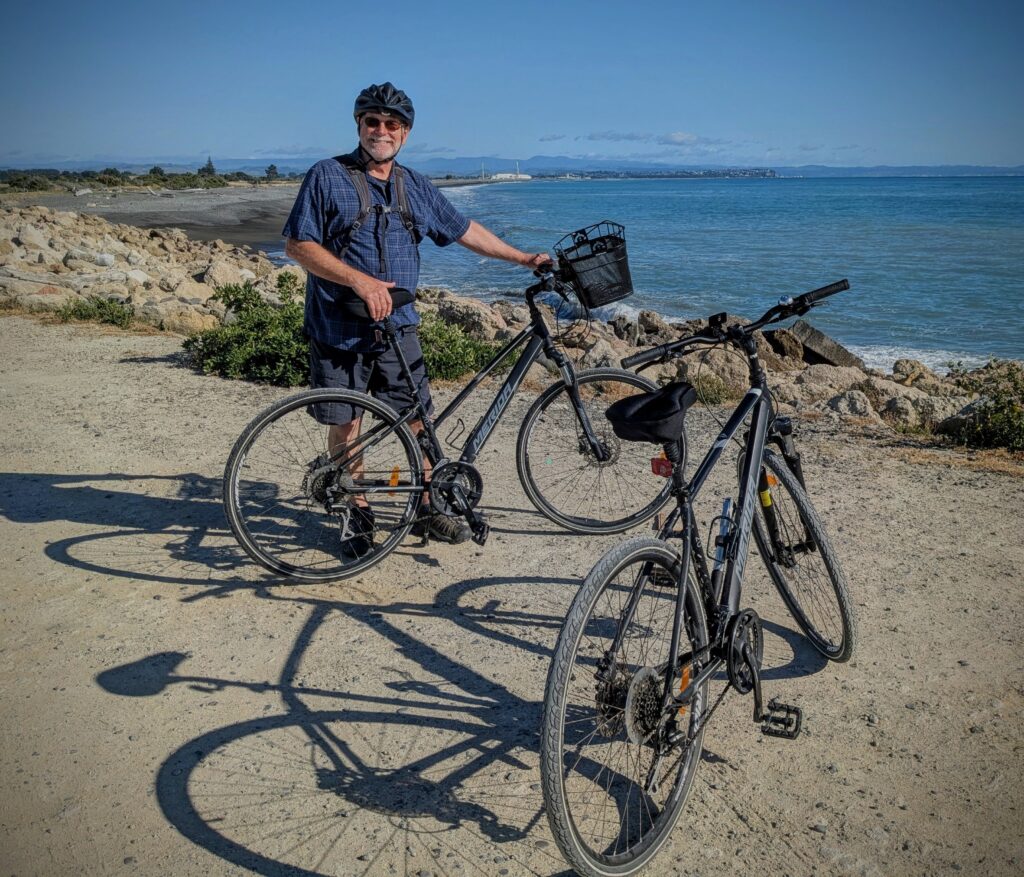
We discovered that though beautiful, the wind along the waterfront bicycle trails is usually strong, in one direction at least!
We also did some exploring by car!
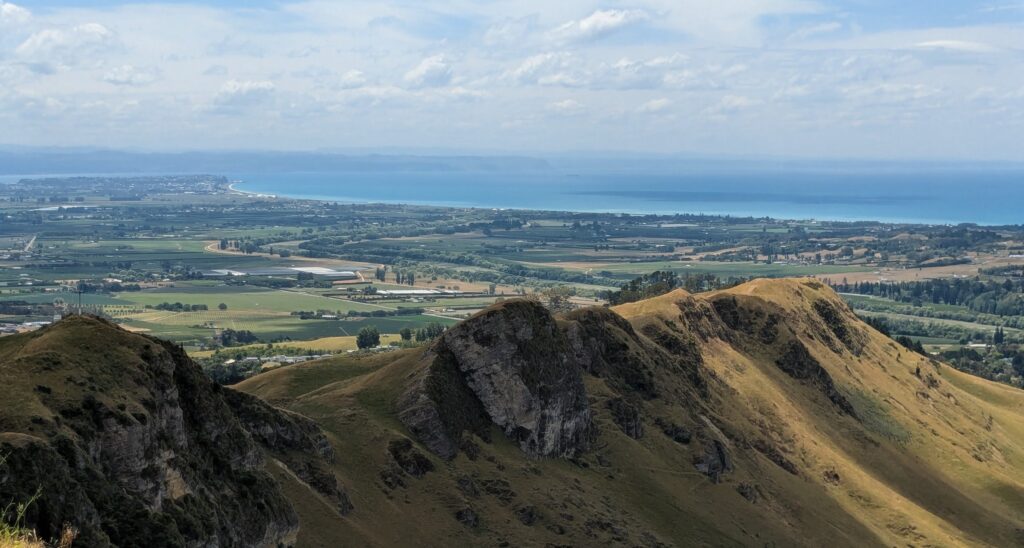
We drove up to Te Mata Peak to get a 360 degree view of the area. Napier is on the point of land in the left of the picture.
We also drove into Napier and up onto Bluff Hill for a view of the port below. Bluff Hill was almost completely surrounded by water prior to the devastating 1931 earthquake that leveled the brick-built center of the city and raised the seabed enough to drain the water from around the hill as well as the marshes to the north and east of the hill.

Looking down on the Port of Napier with loads of pine logs ready for shipping to the far east. The logs are from pine plantations established in the early 1900’s after the native forest was extensively logged. Occasionally a cruise ship is docked at the port!
















